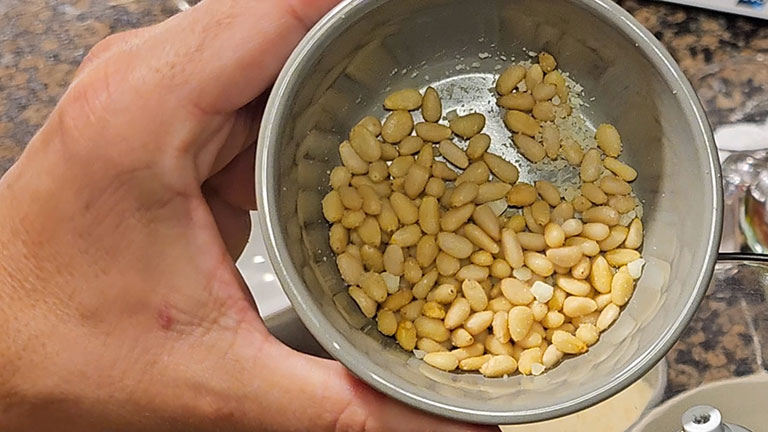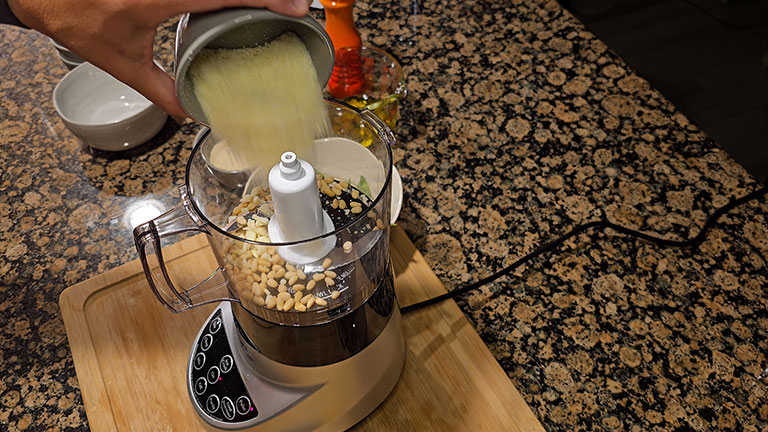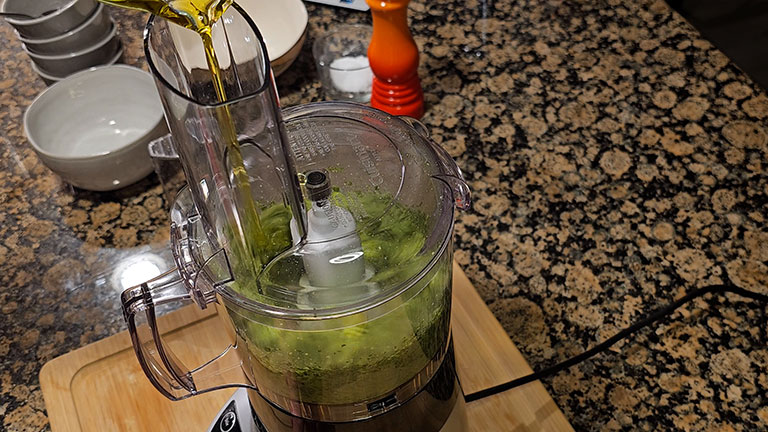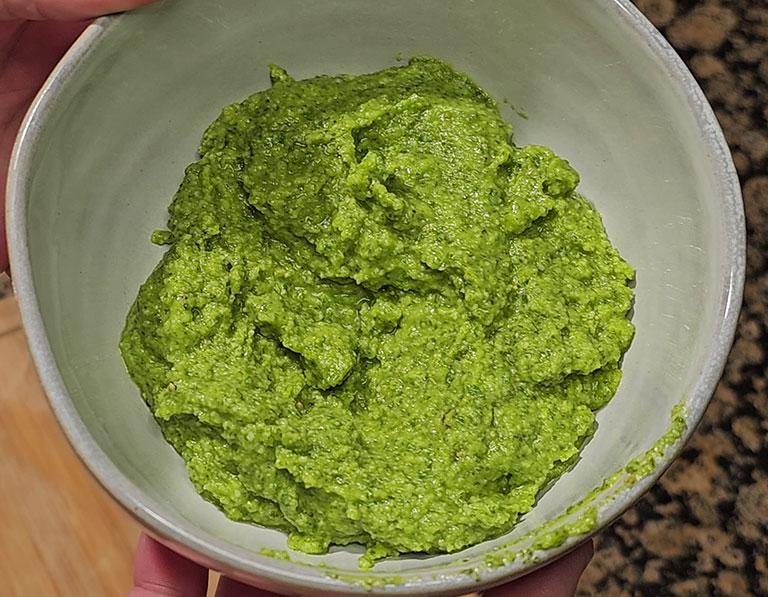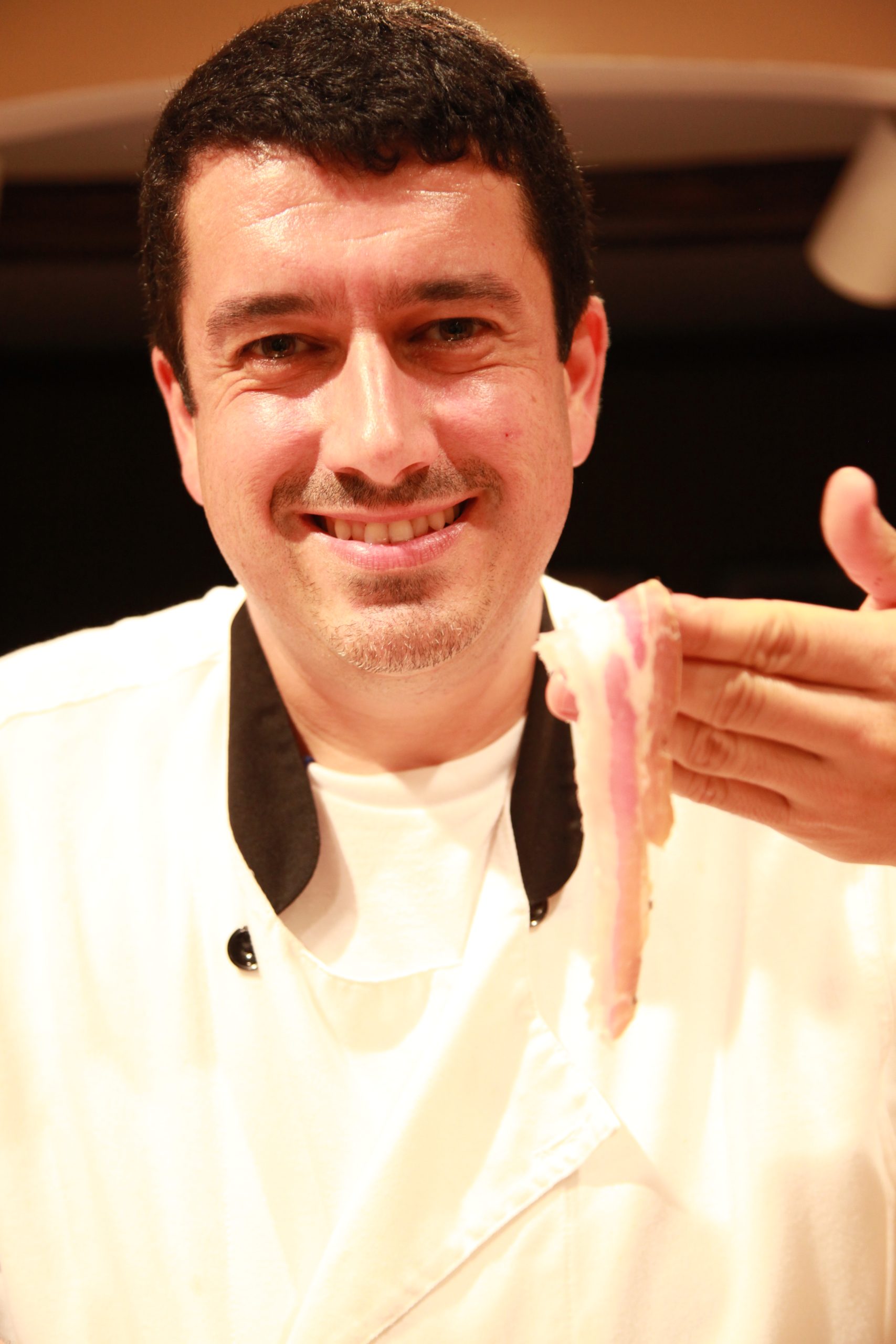Basil Pesto
Basil Pesto, also known as Pesto alla Genovese if you follow some strict requirements, is a delicious Italian sauce. To make it a Genovese you need to use a specific type of basil grown in Liguria and use mortar and pestle to prepare it.
My version is a bit simpler using regular sweet basil and a food processor, so we will just call it Basil Pesto. 😉
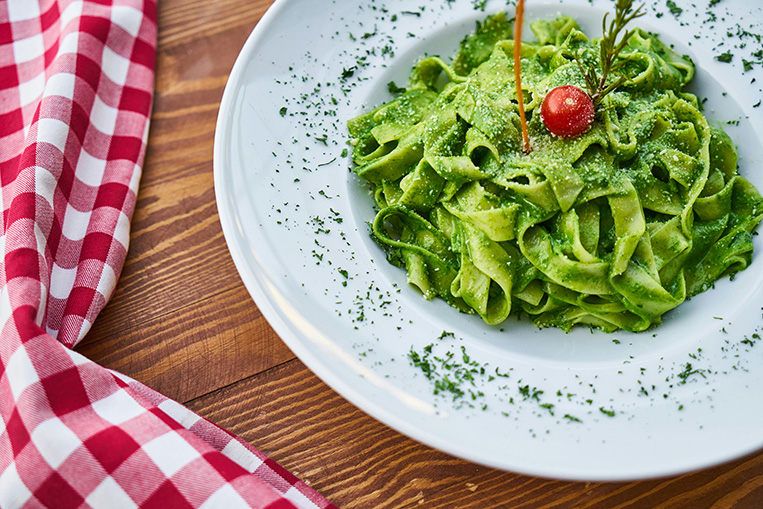
Ingredients
Instructions
Mise en Place
-
Prepare All The Ingredients
- Separate the basil leaves from the stems. Wash them with cold water and place them in a large bowl with plenty of ice for 3-4 minutes. Then remove them and dry them between paper towels.
- Grate the cheeses with a microplane or chop them up in small pieces and pulse them in the food processor.
- Smash the garlic clove.
-
Toast The Pine Nuts
Preheat oven to 350°.
Toast the pine nuts on a rimmed baking sheet, tossing once halfway through, until golden brown, 5–7 minutes. Transfer to the food processor and let them cool.
Process The Ingredients
-
Process the Pine Nuts, Cheese and Garlic
Add the cheeses and garlic to the food processor where the pine nuts have cooled down, and pulse until finely ground, about 1 minute.
-
Add The Basil and Olive Oil
Add basil and place the top back on. Pulse until the basil has been chopped.
With the motor running, add oil in a slow and steady stream until the pesto is mostly smooth, with just a few flecks of green, about 1 minute. Season with salt and pepper and give a final whirl.
-
Enjoy!
To enjoy cook 12 oz. of dried pasta in a large pot of boiling salted water, stirring occasionally, until al dente. I prefer long pasta for pesto like spaghetti or even better bucatini. Drain the pasta, reserving ½ cup pasta cooking liquid.
Cut 2 tbsp of butter into small pieces and place them in a large bowl along with the pesto. Add pasta and ¼ cup of cooking water. Using tongs, toss vigorously, adding more cooking water if needed, until pasta is glossy and well coated with the sauce.
Note: You can preserve pesto a few days in the refrigerator. To prevent browning top it with olive oil, and cover with plastic wrap pressing it directly onto the surface.

